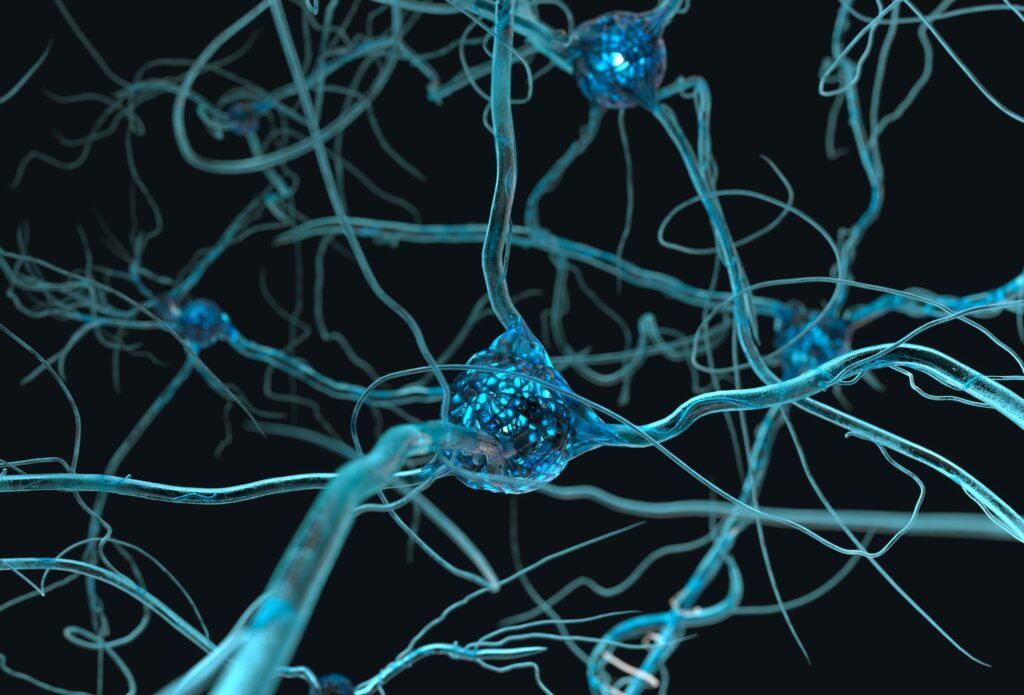As the brain ages, predictable changes occur in its structure and chemistry impacting its decision-making function, affecting both the automatic and deliberate systems. Understanding these age-related cognitive changes is crucial for supporting older adults in making informed decisions and adapting to new challenges.
During this age range, decision-making is essential for adapting to changing circumstances, changes that can threaten daily function and safety leading to a decline in independence and greater reliance on families and community. Although a decline in decision making capacity is age appropriate, the rate of the decline can be slowed and possibly reversed through diet, exercise, and the ongoing practice of decision making. A healthy aging brain continues to have the capacity to learn, although it is in different ways than earlier in life. Continuing to practice decision making in both daily routines and more complex decisions is key to maintaining independence, and continuing to contribute meaningfully to family, community, and personal growth.


As individuals age from 60 to 80 years old, significant changes occur in their decision-making capacities due to various neurological alterations. These changes encompass structural modifications in brain anatomy, neurotransmitter fluctuations, cognitive shifts, and functional adjustments, collectively impacting both automatic and deliberate decision-making systems.
A fundamental rule of the human body is “Use it, or lose it.” These changes make the use of the deliberate system more difficult to access, and results in a tendency to use the Automatic system only. The result is difficulty adapting to changes and making progress with need fulfillment on a daily basis, changes that neurologist call Cognitive Rigidity. The most significant changes include:
Structural Changes:
- Gray Matter Reduction: Age-related decline in gray matter volume, especially in memory, attention, and executive function regions, affects cognitive functions crucial for decision-making, such as memory retrieval and problem-solving.
- White Matter Integrity: While compensatory changes may occur, alterations in white matter integrity can disrupt connectivity between decision-making brain regions, potentially compromising efficiency.
Neurotransmitter Changes:
- Dopamine Decline: Reduced dopamine levels impair reward processing and motivation, leading to decreased sensitivity to rewards and increased risk aversion.
- Serotonin Fluctuations: Changes in serotonin levels influence emotional regulation during decision-making, affecting risk perception and affective responses.
These structural changes result in observable functional changes in decision making including:
Cognitive Changes:
- Slower Processing Speed: Decline in processing speed delays information integration and response execution, impacting decision-making efficiency.
- Memory Impairment: Age-related changes in memory function affect the ability to recall relevant information and engage in prospective memory, hindering both automatic and deliberate decision-making processes.
Functional Changes:
- Prefrontal Cortex Alterations: Structural and functional decline in the prefrontal cortex affects cognitive control and long-term planning, leading to difficulties in impulse regulation and decision-making.
- Amygdala Responsivity: Altered amygdala function influences emotional regulation during decision-making, affecting the interplay between automatic and deliberate systems, making the automatic system more dominant as the brain will more likely down regulate from the deliberate system.
Deliberate System Impacts:
- Reduced Sensory Input: Declines in sensory acuity affect information encoding, potentially leading to unawareness of changes and difficulties in attending to cues.
- Attention and Working Memory Decline: Aging is associated with decreased attentional control and working memory capacity, impacting decision-making, especially in maintaining focus and considering multiple perspectives.
- Impaired Cognitive Flexibility: Reduced cognitive flexibility limits the exploration of diverse decision options, leading to rigid thinking and difficulty in adapting to new information.
Outcome Monitoring and Feedback Processing:
- Less Efficient Error Detection: Older adults may show reduced error detection efficiency, hindering adjustment of decision strategies based on feedback.
- Challenges in Updating Beliefs: Age-related changes in cognitive flexibility hinder belief updating, impacting responsiveness to feedback and adaptive decision-making.
Neural plasticity and Assistive Technology

For individuals aged 61 to 80, decision-making continues to be crucial for navigating various life roles and achieving personal, familial, and community goals. How then can the senior decision maker maintain these capacities? The key is neural plasticity, and the ongoing practice of decision making to increase availability of the deliberate decision making system. The tendency in the senior brain is to develop Cognitive Rigidity, in which the Automatic system becomes more dominant, and the deliberate system becomes less available. This becomes a self propagating cycle, in which increased reliance on the Automatic system strengthens its pathways, and decreasing access to the deliberate system results in reduction of synapses in the system.
Physical changes in a extremity can be mitigated by the use of assistive devices and technology such as a cane or walker. These can be used to improve the function of the senior despite the structural changes in an extremity. The use of the assistive device is beneficial in that it promotes that area to practice moving in a way that stimulates improved strength and function over time. The same is expected in using assistive technology that is organized around the neural processes of decision making. This technology would help seniors make successful decisions over time and concurrently stimulate and strengthen the areas of the brain that perform decision making.
The DDM tools and services are designed around the automatic and deliberate decision making processes innate to the brain. We use these processes to meet needs and perform in the important roles that we have throughout our lives. The life roles during this period typically include:
- Retiree:
- Retirement Planning: Deciding when to retire, how to manage retirement savings, and planning post-retirement activities.
- Retirement Options – DDM DIY
- When I’m considering retirement options, help me to access retirement planning workshops or financial advisors, so that I can make informed decisions about my retirement savings and lifestyle.
- Retirement Options – DDM DIY
- Lifestyle Choices: Making decisions about downsizing, relocating, or maintaining current living arrangements.
- Retirement Planning: Deciding when to retire, how to manage retirement savings, and planning post-retirement activities.
- Grandparent:
- Family Involvement: Engaging with grandchildren, providing support, and passing on family traditions.
- Childcare Decisions: Assisting in decisions about grandchildren’s education, extracurricular activities, and healthcare.
- Volunteer/Community Member:
- Community Engagement: Participating in volunteer work, community service, and civic duties.
- Leadership Roles: Taking on leadership positions in community organizations, clubs, or non-profits.
- Health Advocate:
- Health Management: Making decisions about personal and family health care, including preventative measures, treatments, and wellness programs.
- Managing Health – DDM DIY
- When I’m managing my health and wellness in later stages of life, help me to find accessible healthcare services and resources for healthy aging, so that I can maintain my well-being and quality of life.
- Healthcare Insurance and Medicare – DDM DIY
- When I’m navigating healthcare insurance and Medicare options, help me to understand coverage plans and access information about healthcare providers, so that I can make informed decisions about my healthcare needs.
- Managing Health – DDM DIY
- Lifestyle Choices: Deciding on diet, exercise, and other habits to maintain or improve health.
- Senior Fitness Programs – DDM DIY
- When I’m considering lifestyle changes for better health, help me to find fitness programs or dietary guidelines tailored for seniors, so that I can maintain a healthy and active lifestyle.
- Senior Fitness Programs – DDM DIY
- Health Management: Making decisions about personal and family health care, including preventative measures, treatments, and wellness programs.
- Caregiver:
- Elder Care: Providing care and making decisions for ailing spouses, siblings, or friends.
- Managing Care Needs: Arranging for professional care, managing medical appointments, and coordinating with healthcare providers.
- Traveler/Explorer:
- Travel Planning: Deciding on travel destinations, itineraries, and managing travel logistics.
- Cultural Exposure: Engaging in activities that involve learning about and experiencing different cultures.
- Financial Manager:
- Investment Decisions: Managing retirement funds, investments, and financial portfolios.
- Investments and Finances in Retirement – DDM DIY
- When I’m managing finances and investments in retirement, help me to access resources for financial advice and retirement income planning, so that I can ensure financial security in my later years.
- Investments and Finances in Retirement – DDM DIY
- Estate Planning: Making decisions about wills, trusts, and the distribution of assets.
- Estate Planning – DDM DIY
- When I’m planning my estate or creating a will, help me to understand legal processes and find reputable estate planning services, so that I can ensure my assets are managed as per my wishes.
- Estate Planning – DDM DIY
- Investment Decisions: Managing retirement funds, investments, and financial portfolios.
- Mentor/Advisor:
- Guidance: Providing advice and mentorship to younger family members, colleagues, or community members.
- Sharing Wisdom: Passing on knowledge and life experiences to others.
- Hobbyist/Enthusiast:
- Pursuing Hobbies: Deciding which hobbies or interests to pursue and how to allocate time and resources.
- Skill Development: Learning new skills or improving existing ones in areas of personal interest.
- Lifelong Learner:
- Educational Pursuits: Enrolling in courses, attending lectures, or participating in learning activities.
- Learning Digital Devices – DDM DIY
- When I’m navigating technological advancements, help me to access technology training or support for using digital devices, so that I can stay connected and informed in a rapidly evolving digital world.
- Learning Digital Devices – DDM DIY
- Personal Growth: Engaging in activities that promote intellectual stimulation and personal development.
- Educational Pursuits: Enrolling in courses, attending lectures, or participating in learning activities.
- Philanthropist:
- Charitable Giving: Making decisions about donations, supporting causes, and engaging in philanthropy.
- Legacy Contributions – DDM DIY
- When I’m deciding on legacy projects or charitable contributions, help me to find opportunities to volunteer or support causes dear to me, so that I can leave a positive impact on my community or society.
- Legacy Contributions – DDM DIY
- Volunteer Leadership: Leading or participating in charitable organizations and initiatives.
- Charitable Giving: Making decisions about donations, supporting causes, and engaging in philanthropy.
- Homeowner:
- Property Management: Deciding on home maintenance, renovations, or potential downsizing.
- Downsizing Home – DDM DIY
- When I’m exploring options for downsizing or relocating, help me to access resources for senior housing or retirement communities, so that I can make a smooth transition to a more suitable living situation.
- Downsizing Home – DDM DIY
- Real Estate: Managing property investments, buying, selling, or renting properties.
- Property Management: Deciding on home maintenance, renovations, or potential downsizing.
- Networker:
- Maintaining Connections: Keeping in touch with family, friends, and professional contacts.
- Building New Relationships: Establishing new social connections and support networks.
- Senior Connections and Community – DDM DIY
- When I’m seeking social connections and community involvement, help me to find senior centers or activities geared towards older adults, so that I can stay engaged and connected with others.
- Senior Connections and Community – DDM DIY
- Self-Manager:
- Time Management: Prioritizing activities and managing time effectively to balance various commitments.
- Stress Management: Making decisions that promote emotional well-being and reduce stress.
- Activist/Advocate:
- Social Causes: Engaging in activism or advocacy for social, environmental, or political causes.
- Community Advocacy: Participating in initiatives that support local community needs and improvements.
- Spouse/Partner:
- Relationship Maintenance: Working on maintaining and nurturing marital or partnership relationships.
- Shared Goals: Collaborating on long-term goals, such as travel plans, health management, and financial decisions.
- Consumer
- Financial Decisions: Managing daily expenses, budgeting, and making significant purchases.
- Lifestyle Choices: Deciding on personal and household needs, including technology, entertainment, and services.
